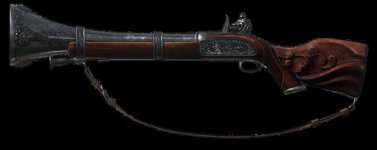As an old guy who no longer has vision acute enough to see the front sight clearly, I've been forced to train myself to point shoot. At 5-7 yards, I actually shoot smaller groups than I do when using the sights. Admittedly, I may be using the blur that was once the front sight subconsciously.
At distance, with time, I use the sights, but then you are no longer in a justifiable self defense shooting situation.
The above statement may, or may not be true. The problem is that in the race between remaining entirely politically correct and continuing to remain alive, if you guess wrong ....... you might not be around for either the coroner's inquest, or the fascinating court case which could follow; and, who knows, you might, also, miss your chance to meet Massad Ayoob.

Another thing: Anyone who still thinks that most CQB pistol gunfights, all, occur at very close range is, sadly, well behind the times. The most recent gunfighting data reveals that many victims managed to survive by acting sooner rather than later.
Many, if not most, unfortunate victims of gun violence are, invariably, the same righteous, upright, and politically correct people who: (1) Were, themselves, unarmed, (2) were armed but, nevertheless, still got themselves unexpectedly ambushed, (3) were naïvely unprepared and/or overconfident, (4) foolishly trusted in either, 'the system' or someone else to protect them, (5) simply weren't paying attention, or - in the alternative - (6) were either unable to think fast enough to form a viable survival plan, or (7) regrettably had no practical means of adequate self-defense available with which to save themselves.
'Street survival', and/or CQB pistol gunfighting ain't, 'rocket science'! Out on the street, out in the real world, attempting to remain politically correct, and/or hesitating in order to verify the parameters of whatever potentially violent (life or death) scenario you're confronted with is no different that the driver of a dragster waiting until he's sure the light is green before he releases the clutch!
Any drag racer who feels compelled to wait, who needs to verify his own behavior to himself before he acts, is sure to end up looking at the back of the other driver's dragster; and, even though it's currently politically incorrect to talk about it, the exact same rationale behind drag racing, also, applies to CQB pistol gunfighting.
Don't believe me? OK, do an internet search for any of the FBI reports on how armed criminals think, and are most likely to behave. Then read retired Sheriff's Deputy Lieutenant Dave Spaulding's incisive analysis of what really happens in a gunfight.
In brief: An armed opponent who intends you harm will always try to shoot first, as well as BEFORE you do. Hence the practical, real world value of using: (1) a, 'flash sight picture', (I don't like that term.) (2) speed shooting, and/or (3) firing sooner and at greater distance rather than waiting to be absolutely positively 100% sure that you're doing, 'the right thing'.
Excessive time, excessive doubt, confusion, inexperience, and uncertainty are, all, intrinsically dangerous intellectual dilemmas that no CQB pistol gunfighter can afford to indulge in. As my mother once said to me,
'Son, you can't rely upon other people to give you the right answer.' 'Other people aren't going to save you.' 'The smart move is to always be prepared to save yourself.' 'You constantly need to be ready; and the solution should always be available beforehand.' 'Anything else, any other sort of personal behavior, is a recipe for disaster.'
(At the time Mom was talking about financial investments; but, it didn't take me long to appreciate that my mother's advice enjoyed a much wider application!)


